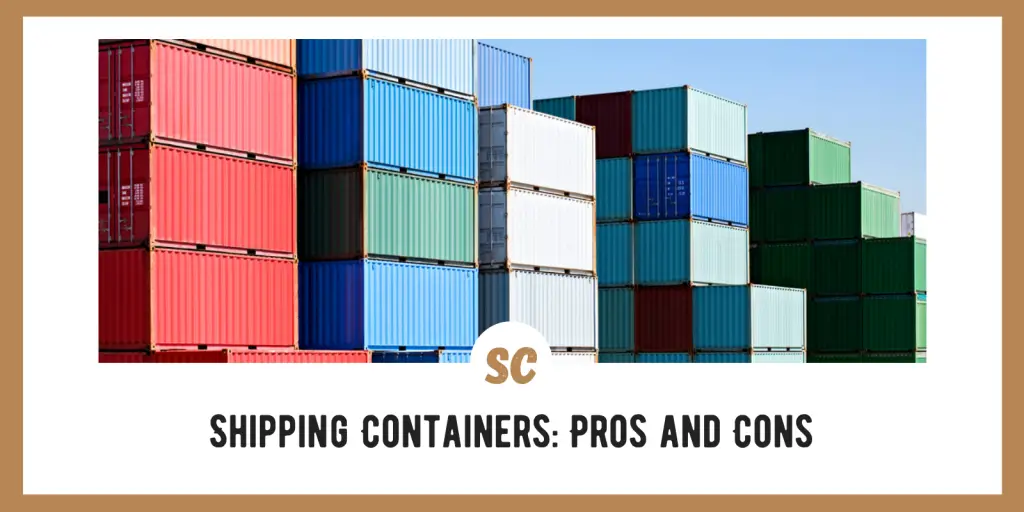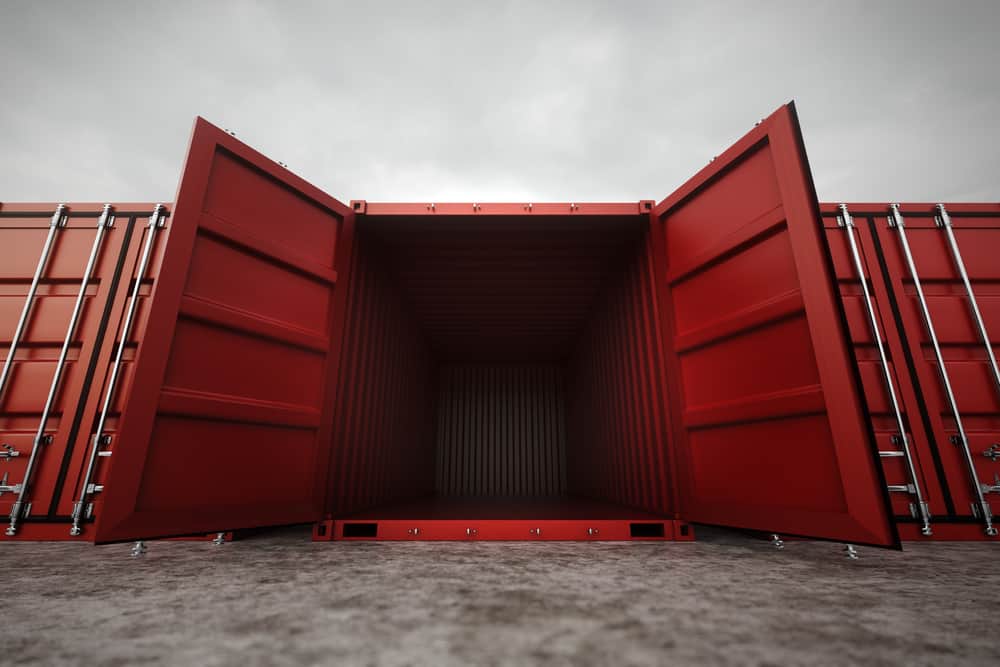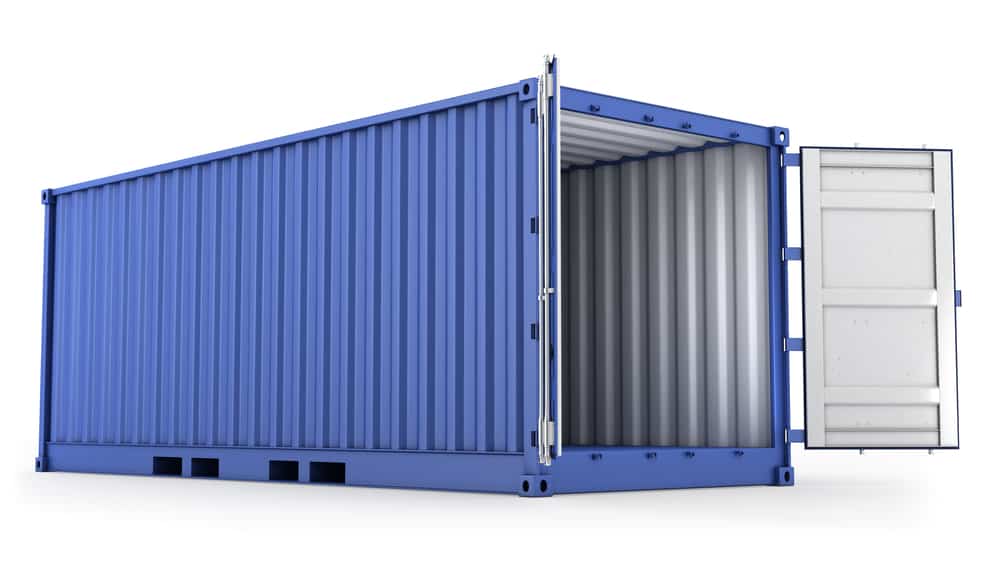Years ago, shipping containers became a hot commodity among preppers and disaster readiness-minded people. In fact, they are still quite popular today, for a variety of reasons.

Most notably they became popular as an affordable means of creating an underground bunker, which comes with problems of its own that I will discuss a little bit later.
You may be wondering what all the hype is about with these seemingly simple objects and should you even get one?
To better understand the answers to those questions, we need to understand what makes shipping containers good and some not so good aspects of them.
Keep in mind that shipping containers are popular among preppers for three main purposes, above or below ground storage, raw material for building another structure, and as an underground shelter or bunker.
SKIP AHEAD
Shipping Containers Pros
I just wanted to quickly say that this article is not intended to sway you one way or the other on these containers, you can buy one or don’t. I simply wanted to share the pros and cons of shipping containers as I see them.
Affordable
Shipping containers come in different sizes and how much one costs will primarily depend on what size you choose. At the time of writing this article (2021), the average cost of a container is between $1,000-$5,000, although they can cost more.
That may seem like a lot of money for what is essentially a big box, but if the container is being used to build another structure, this could save a lot of money down the road.
Also, if you are using them for storage, they are a onetime investment versus possibly paying a monthly/yearly fee for other storage options.
Sizes
As stated above, shipping containers come in different sizes, from ten-foot to forty-foot containers. This gives you different options depending on what you want to do with the container and this can open the door for creating other projects with them.
Usability
Shipping containers can be used above ground or below ground. They can be used for short-term or long-term storage and some people have even used them to create homes or living quarters within them. Let your creative juices flow because there are a lot of different ways these containers can be utilized.
Prefabricated Spaces
Shipping containers can be used as prefabricated blocks for building other structures such as a home, workspace, shelter, or a cabin-like retreat.
There are two great reasons why a person would want to use a shipping container in this manner. First, it can be much quicker building process. A typical home for example can take several months or longer to build. With a shipping container, that time can be reduced drastically because once it is in place the structure is already there.
Secondly, by reducing build time and materials used, the cost will also be drastically reduced.
Durability
Made from steel, these containers are built to take a beating and to keep going. They are continuously used and moved across continents, from ships, trucks, and storage facilities.
When properly taken care of, the steel walls of a shipping container will last and provide additional strength to a structure.
Secure
Even smaller shipping containers are quite large and heavy. Made from steel and having large durable doors that can be chained locked, these containers can be an effective way of keeping important items safe.
A person won’t be able to simply walk off with this container and getting into it will take extra effort.
Moving It
With the right equipment, shipping containers are easily moved which is great news if you find yourself a new home or property.
Speaking of homes, most people do not move their houses when they move, they find a new house. But if you build a tiny home or just a smaller scale home from shipping containers, you can find yourself a piece of property and move your home to it. Isn’t that a different idea?
Shipping Container Cons
Some of the positive characteristics of a shipping container can also be negative, depending on your perspective and situation, which is why you may see a few repeats in the following section.
Price
The container itself will cost several thousand dollars, not to mention the cost of shipping it to your location and paying for the equipment needed to put it where it needs to go. Dropping thousands of dollars on a simple storage unit may be out of the question for some people.
Moving It
These containers are big and heavy. If you ever need it moved, it is going to require special equipment to do so. Simply picking this container up and moving it is not an option. For example, forty-foot long containers can weigh upwards of eight thousand pounds.
Available Space
Even small shipping containers are quite large, and a person will obviously need quite a bit of space to store them. Sorry to the apartment or some urban dwellers as a shipping container may not be a good option for you.
Underground Bunker
There is this idea going around that shipping containers make an amazingly affordable underground bunker.
You purchase one, bury it, and voila, instant underground bunker!
Unfortunately, that is not necessarily the case. This may be okay to do if the container is buried shallow and used for short-term sheltering, i.e. bad weather, but for the kind of bunker most people think about, its not that simple.
This article is not about how to use a shipping container as a bunker but just know that if you want to use it in this manner, more money will have to be spent on altering it so that you can bunker down safely inside.
Not Discreet
I’m sure by now, you have gotten the hint that a shipping container is a rather large object. This means that when they are used for above-ground storage, they will not be very discreet.
This may not be a problem for someone that has a decent amount of land where the container could be hidden away from prying eyes or camouflaged.
Otherwise, a shipping container on your property, especially a container that has locks on it, will draw unwanted attention. It basically screams, “I have something of importance or valuable inside.”
Its History
If possible, you will want to know the history of the container and if it has been treated in any way. Shipping containers do not just transport teddy bears and sneakers. Sometimes, rather nasty chemicals are hauled inside of them
If you do not know what was stored in the container or if it has been treated or cleaned, it’s probably better to pass on purchasing it than risk exposing yourself to something harmful.
Keep In Mind
When using a shipping container as a simple structure above ground, like a shed to store equipment in, for example, it is probably going to be just fine using it as is.
Keep in mind though that if you plan on using a shipping container in any other way, like building a small home or burying it, it would be best to consult with an individual who has worked on shipping containers before.
This is because once you start altering the container or putting it in an environment it was not intended for, its structural integrity may become compromised.
The weight of soil, or simply cutting out a section to install a window may require additional support to prevent the container from failing down the road.
Wrap Up
For the person with the financial means and space available, a shipping container can be an affordable, effective, and durable one-time investment for keeping goods secured or building a creative, personalized structure.
However, always do your research on a product before jumping on the bandwagon because things are not always as simple as they appear, and everything has its pros and cons.
Thanks for reading and I hope my list was informative and enjoyable. If you have any questions or comments about shipping containers be sure to sound off in the comment section below!



